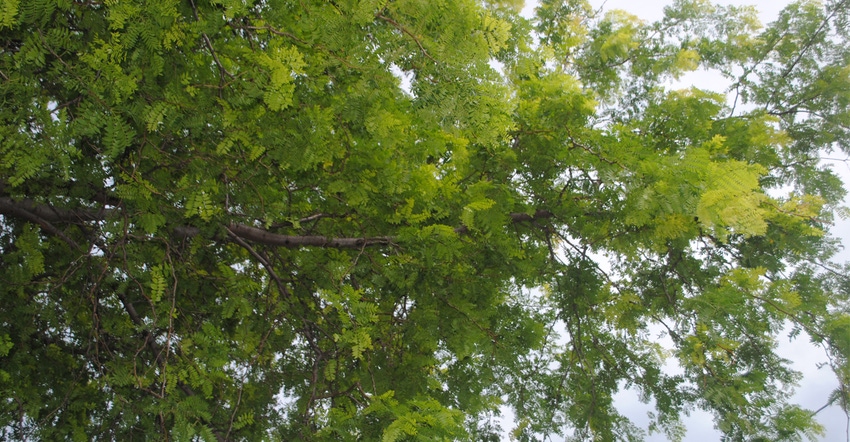
Soil health is the buzzword these days across agriculture. Farmers are focused not only on saving soil in the field, but also improving the soil health and fertility.
While crop producers are the most likely folks to talk about soil health and soil fertility, there is research ongoing about how woodlands and agroforestry practices such as silvopasture play into the soil health picture, particularly when it comes to nitrogen.
They’ve been studying silvopasture systems — combining grazing livestock and trees — at a research site in Blacksburg, Va., for 25 years. Researchers from Virginia Tech University recently reported that some Rhizobium bacteria species responsible for nitrogen fixation may be associated with honeylocust.
Although they are in the legume family, honeylocust trees do not form nodules on roots, typically associated with nitrogen fixation. Studies have shown that foliar nitrogen concentrations of honeylocust trees fall somewhere in between levels found in nodulating legume trees such as black locust, and nonleguminous trees.
It isn’t known if these trees can fix nitrogen captured from the atmosphere, but it seems clear that honeylocust trees are associated with additional nitrogen in the soil. If this is true, having honeylocust as part of silvopasture systems would reduce input nitrogen needs to produce high-quality pasture for grazing.
At one agroforestry research center, two types of silvopastures were compared to open pastures without trees. In one paddock, black walnut trees were established for their nuts and timber. In another paddock, honeylocust trees were established for their nutritious pods. Both trees have compound leaves, producing diffuse canopies that help maintain grass and forage production, because their leaves allow some sunlight through the canopy.
Soil samples collected from the paddocks and open pastures were analyzed for inorganic nitration. While not statistically significant, soil samples in the honeylocust silvopasture paddocks were higher in total nitrogen, compared to the paddocks with black walnuts or open pasture.
Forage species analysis also was done on each of the paddock types through three summers. Black walnut silvopastures had more tall fescue and orchardgrass, with orchardgrass most dominant. Honeylocust silvopastures had about twice as much red and white clover compared to the open pastures.
These clovers are coveted by livestock producers and can offer a significant amount of nitrogen to the pastures as they are consumed by livestock, with excess nitrogen excreted back to the pasture.
Researchers think that honeylocust may have provided a better environment for the clovers to thrive, compared to the black walnut silvopastures and open pastures, and that is why the soil nitrogen levels were higher with honeylocust than in the other pasture types. It could be that honeylocust trees simply have the same effect as clovers in offering more nitrogen to the soil.
Further analysis is ongoing, trying to gain a real life understanding of these systems, so farmers could put into action tree and forage planting strategies that reduce input costs and improve profitability from silvopasture systems.
About the Author(s)
You May Also Like






